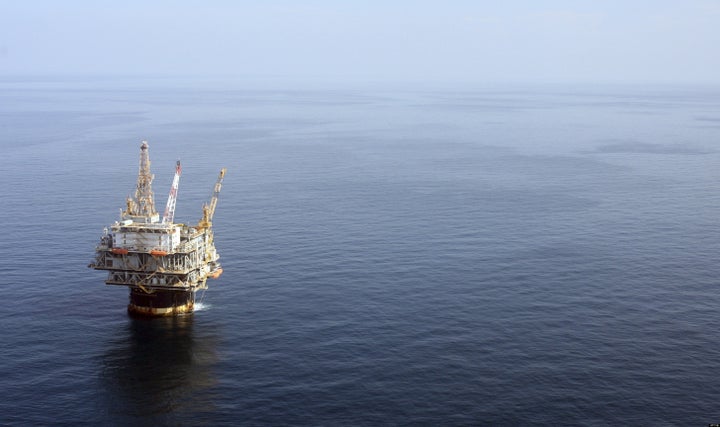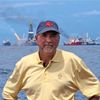
Today marks the six-month anniversary of the blowout of BP's Mississippi Canyon Block 252 well in the Gulf of Mexico, now famously known as the Macondo well. The disaster, which cost the lives of 11 good men, also exposed the dangers and incalculable risks to our environment of drilling on the open ocean in thousands of feet of water. Up until the night of April 20, most Americans had no idea that we were even drilling in the extreme conditions of the deepwater, much less understood the razor-thin margins of error that exist when exploring for oil in that territory. As the crisis unfolded on our television screens, we watched with fascination as extremely sophisticated robots operated on the seafloor, attempting, in vain, to get the blowing out well under control. No one seemed to know that to do... the federal government had no deepwater oil and gas experts; the industry had no technology or procedures for managing a blowout 5,000 feet below the ocean's surface. No technology existed to contain or collect oil in a deep-ocean environment. This was an accident that simply wasn't supposed to happen. Even though government bureaucrats, Coast Guard officers, and politicians all asserted that they were in charge, in reality, no one was, except for BP, who had started its campaign of finger-pointing in the very first hours of the crisis to deflect blame away from itself as its well fouled the Gulf of Mexico.
The disinformation campaign and mismanagement of the crisis began immediately. In the early hours, private fireboats fought the fire on the blazing rig as the Coast Guard, who had successfully rescued the survivors the first night, stood by and just watched. Firefighting on offshore drilling rigs is not part of its mission, with that responsibility falling to private operators. Because there was no central authority on site, the fireboats, desperately trying to save the rig, deluged its decks with millions of gallons of seawater, eventually flooding the vessel and actually hastening its ultimate sinking two days later. After the rig was lost, the Coast Guard announced that the well had stopped flowing, even as BP representatives stood mute right next to them, knowing full well that the assertion was false. While Rear Admiral Mary Landry was making the remarkable announcement that no oil was flowing from the well, BP was desperately attempting to shut in the damaged blowout preventer with remotely operated vehicles as oil roared out of the well only feet from where they were working. Ultimately, the truth that the well was flowing tens of thousands of barrels per day eventually became public. However, to this day, BP has never disclosed their estimate of flowrate, and the government let them get away with shutting in, and eventually killing the well without first measuring the flow. Because of this fact, BP will certainly dispute the government's estimates of flowrate when it comes time to calculate the per-barrel fines and other liabilities.
As the crisis grew, BP implemented a very carefully executed public relations plan; while appearing to be transparent with numerous "technical briefings" and press opportunities, they never really gave much information. Besides hiding the flow rate, BP kept vital information from the public for weeks and months. They poured hundreds of thousands of gallons of toxic dispersants into the ocean even as the EPA ordered them to severely limit their use. After BP began providing live video feeds from the seafloor, these feeds oddly became blurry or simply unavailable during critical operations. The company's mantra became "all is going according to plan," even though they were making things up as they went along as each new attempt to control the well failed. The only real BP casualty was Tony Hayward, who lost his job and was shipped off to Russia after becoming a one-man gaffe machine.
As days turned into weeks and weeks into months, we began the national debate over energy policy asking why we were even in the deepwater. Some environmentalists predicted apocalypse, accusing big oil of raping the earth and poisoning the populace, ignoring their own use of fossil fuels. The industry retreated to their familiar territory, making the discussion all about money and using their employees as pawns, even as they avoid US taxes and employment laws by flagging their rigs and locating their headquarters in foreign countries. The politicians, doing what they do best, played politics. The left called for drilling bans and criminal charges; the right, ignoring eight years of Bush administration deregulation and rubber-stamping of drilling permits, severely criticized the very organization they helped create, calling for even more deregulation at the same time. Scrambling to keep up with the crisis, the Obama administration imposed a ban on all offshore drilling, eventually limiting it to deepwater operations, while at the same time slow-playing all offshore permits trying to figure out what to do.
The well was officially killed and cemented on Sept. 19; under extreme political pressure from the upcoming fall elections, as well as from Gulf Coast politicians and businesses, the Secretary of Interior relented and lifted the government ban on deepwater drilling on Oct. 11, justifying the move by just adding yet another layer of new certifications, but no tangible improvements to safety. The new drilling rules requires no redesign of blowout preventers or control systems, merely mandate third party certifications that they are "... capable of cutting any drill pipe... ," knowing full well that no blowout preventer can actually do that. The new rule also requires a certification from the CEO that the company is in compliance with all the new government regulations, but there's no mention of that CEO actually having to be within reach of US laws. Salazar left open the door for new regulations some time in the future, including redundant shear rams for blowout preventers, but has so far stopped short of any real reform to deepwater drilling safety.
So, six months after the largest environmental catastrophe in the history of the United States, we are poised to go back into the deepwater, doing the same thing we were doing before the disaster on the Deepwater Horizon, with the same equipment, same rigs, and same systems. Once again, politics has trumped saving human lives and the environment, and here we are, doing too little, too soon.
Bob Cavnar's new book, Disaster on the Horizon, is being released October 22.
